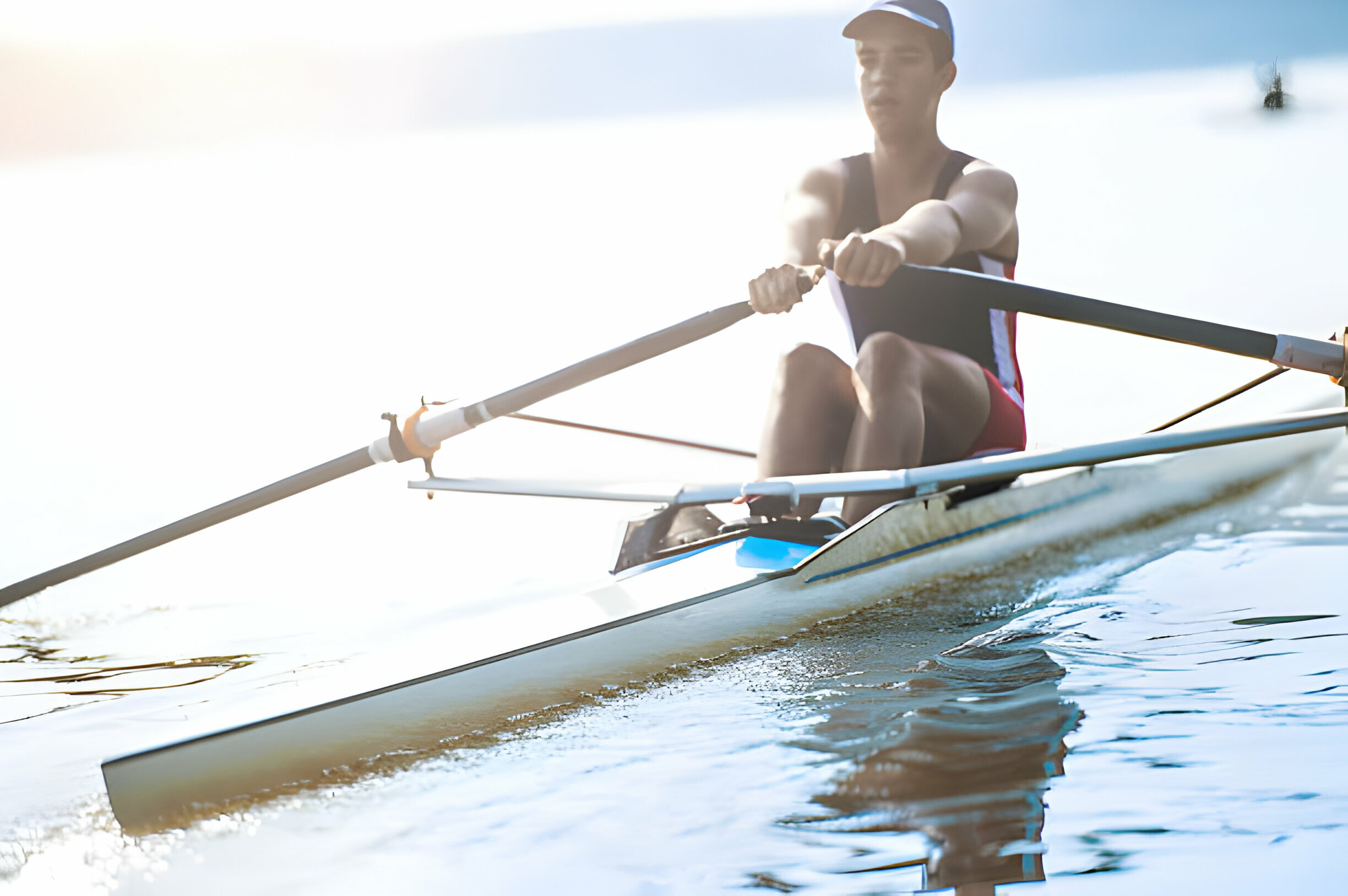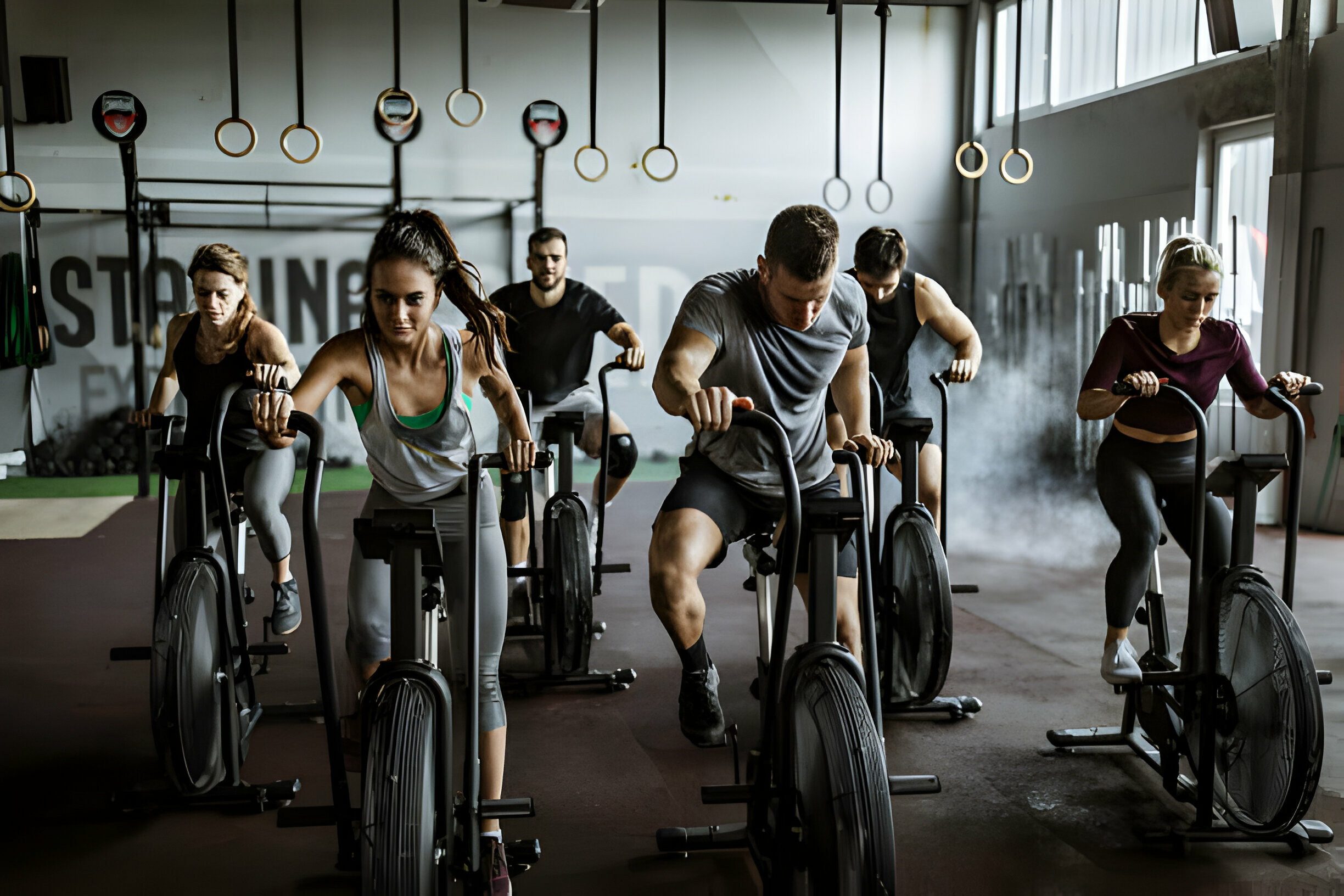Are you an aspiring professional rower looking to take your long-distance racing skills to the next level? Exploring different techniques used by experienced pros can help give you a competitive edge. From perfecting efficient strokes and body positioning to understanding how changing weather conditions affect performance, having knowledge of various strategies and methods is essential for success during any race. Learn more about what it takes to reach the top in this comprehensive guide on exploring different techniques used by professional rowers during long-distance races.
Table of Contents
Utilizing Technology to Enhance Performance
Professional rowers use a variety of techniques during long-distance races to maximize their performance. One technique is the “slingshot”, which involves rapidly accelerating just before a boat enters a turn, allowing it to gain extra momentum and increase its speed. This technique requires precise timing and anticipation from the rower as well as strength and agility to pull off effectively. Another popular technique used by professional rowers is known as “feathering”. This entails adjusting the angle of oar blades about each other so that they enter water at different times. This reduces drag on one blade while simultaneously providing more power for propulsion with the other blade. In addition, many professional rowers employ an efficient stroke pattern that takes into account body positioning, weight distribution, and power application throughout each motion. Properly executed this can significantly reduce fatigue during longer distance races while also increasing overall speed over time. Lastly, good communication between teammates is essential for any rowing crew; having an established signal system allows members to synchronize their efforts without needing verbal commands (which would be difficult or impossible due to noise created by wind resistance). With all these tactics taken into consideration, professional rowers can make full use of their skillset and achieve greatness on the racecourse!
Strength Training for Long-Distance Races
Professional rowers competing in long-distance races must take the utmost care when preparing for and executing their race. They must be aware of proper technique and use different strategies to ensure they can finish the race successfully. One such technique is having a consistent stroke rate, which provides stability and allows them to maintain a steady pace throughout the entire race. Additionally, professional rowers should adjust their technique according to water conditions; by rowing with a higher catch angle during choppy waters or a lower catch angle during calmer waters, they can maximize their performance while minimizing fatigue.
Another important strategy used by professional rowers is focusing on good body posture throughout the entire race which helps promote efficiency as well as reduce injury risk. Professional rowers will also utilize different techniques of breathing like exhaling during each drive phase and inhaling during the recovery phase, which ensures effective oxygen intake without compromising power production from the arms and legs. Furthermore, adding variation in terms of speed during long-distance races helps break up monotony while providing an opportunity for strategic rest periods where energy reserves can be replenished before continuing at full speed again. By utilizing these various techniques effectively, professional rowers can better prepare themselves for success during any long-distance competition they may enter.
Nutrition Strategies for Professional Rowers
Professional rowers use various techniques to remain competitive during long-distance races. One of the most important strategies is having a good warmup, which helps prepare the body for rigorous exercise and can prevent injuries. A proper warmup should include stretching, dynamic exercises like jogging in place or arm circles, and some light rowing drills. This prepares the muscles for more intense activity as well as helping to reduce fatigue later on in the race.
During a race, professional rowers are also sure to keep their form consistent throughout all stages of competition; this means maintaining proper posture with your back straight and eyes looking forward while you are rowing. To maximize efficiency it’s important to maintain an even stroke rate and pace throughout each stage so that no energy is wasted. Professional rowers will also be sure to monitor their breathing patterns; deep breaths when pulling back on the oar allows them to get enough oxygen into their bodies quickly while exhaling sharply when pushing forward ensures they don’t waste energy by releasing carbon dioxide too slowly.
Finally, professional rowers need to stay hydrated during long-distance races by drinking plenty of fluids before and after competing as well as sipping small amounts of water throughout the event if permitted by race organizers. Staying properly hydrated helps ensure athletes don’t become dehydrated or overheat, both of which could cause significant harm due to prolonged exposure during a race course with little access to rest stops or medical care along the way. By following these simple tips, professional athletes can improve their performance significantly during long-distance rowing events!
Developing Proper Form and Technique
Professional rowers use a variety of techniques to help them maximize their performance during long-distance races. A common technique used by professional rowers is the “catch and drive” method, which involves using the power from your legs to propel yourself forward. This technique requires precise timing and coordination between each oar movement, as well as maintaining a good posture while at full extension with each stroke. Professional rowers will also employ various recovery methods to recover quickly after each stroke, such as body rocking or feathering the catch before starting back into their drive sequence. Additionally, many competitive rowing crews practice drills that are designed to increase efficiency when racing over long distances. These drills often include increasing speed on shorter strokes or incorporating pauses for rest into longer sequences. Finally, proper pacing is essential in these events since it allows athletes to maintain energy levels throughout the race and avoid fatigue-related issues like dehydration or cramping near the end of the race. Overall, professional rowers utilize a variety of different techniques to maximize their performance during long-distance races and achieve success on competition day.
As part of proper technique execution during long-distance races, professional rowers must also be sure to focus on proper form and posture throughout each stroke cycle for maximum power output with minimal fatigue or strain on muscles. This includes keeping a straight back while taking strokes and using smooth transitions between strokes instead of abrupt jerking motions; this helps ensure that power is evenly distributed across all parts of the body rather than being focused exclusively in certain areas or muscle groups like arms or legs. Professional long-distance racers must also properly manage their breathing patterns to take full advantage of oxygen intake capabilities and reduce fatigue levels caused by improper breath control at any given point during a race – something that becomes increasingly important as race distances increase.
By thoroughly understanding and practicing all aspects related to proper rowing technique, competitive athletes can greatly improve their performance while competing at any level within the sport – from recreational outings up through international competitions such as Olympic events. With thorough preparation combined with effective implementation under pressure, professional crews can set themselves apart from other competitors who lack similar levels of expertise or experience necessary for successful execution in long-distance racing scenarios.
Mental Preparation Techniques for Long-Distance Races
Professional rowers use a variety of techniques to push their performance during long-distance races. These techniques are tailored to the individual athlete based on physical attributes and fitness levels. A combination of aerobic and anaerobic training is used to build strength, endurance, and speed. Interval Training is also employed as this allows athletes to work at higher intensities for shorter periods rather than maintaining a steady pace throughout the race. Flexibility exercises such as stretching before or after races can help reduce muscle soreness and improve overall mobility which can aid in achieving better stroke technique.
Good nutrition plays an important role in keeping energy levels up during long-distance rowing events; eating healthy foods with complex carbohydrates that provide slow-burning energy like whole grains, beans, fruits, vegetables, and lean proteins will help keep athletes fueled throughout their event while avoiding sugary snacks that give short bursts of energy followed by crashes in blood sugar level. Hydration is another key factor for success; drinking plenty of water before, during, and after a race helps maintain proper hydration levels which are essential for optimal performance.
To increase efficiency when rowing it’s important for professional rowers to focus on formfirstand foremost; having good posture combined with correct hand placement on the oar handle will enable athletes to maximize power output per stroke while reducing fatigue over time due to poor positioning or inefficient technique. Rowing drills focusing on different aspects such as body position or timing can be used alongside video feedback analysis from coaches or even self-analysis using recordings from onboard cameras attached directly onto oars so that any weaknesses can be identified quickly allowing them room improve in their next session with practicing starts/stops regularly until they become second nature under pressure situations out on the water.
Analyzing Race Conditions to Optimize Performance
Professional rowers use several different techniques to help them succeed during long-distance races. The most important technique is the use of good posture and positioning, allowing the rower’s body to remain in balance throughout. Proper form allows for a smooth transition from one stroke into another, minimizing energy expended that could otherwise be used for propulsion. Additionally, proper form also helps ensure that the boat moves in a straight line as opposed to veering off course due to an imbalanced distribution of power between oarsmen on opposite sides of the boat.
It is also important for professional rowers to maintain rhythm and tempo when rowing over long distances; this helps conserve energy by avoiding quick bursts followed by pauses or breaks which can cause fatigue faster than steady strokes do. Rhythm and tempo are especially important when two rowers are involved because they must both work together with synchronized movements if they wish to reach their destination efficiently and quickly. To further maximize efficiency while rowing long distances, each stroke must be powerful yet economical to not waste any energy during the race.
Lastly, mental discipline plays a big role during these events; professional athletes need focus and concentration to stay motivated through difficult times such as periods where progress may seem slow or lackluster compared with competitors who have taken an early lead. It requires resilience and determination from all participants if success is desired at a high level – something only experienced professionals can manage!
Evaluating Results and Refining Techniques
Professional rowers who participate in long-distance races employ a wide variety of techniques to maximize their performance. A popular technique used by many athletes is the “rating” system, which involves controlling intensity levels throughout the race. This allows them to save energy and maintain steady power output throughout an extended period. Other common strategies involve focusing on breathing patterns, using visual cues from surrounding watercraft, and employing body posture adjustments that take advantage of changing wind conditions. Many experienced rowers also use tactics such as drafting off of other boats or rows to conserve energy while still maintaining a competitive speed.
In addition to these practical considerations, professional rowers must stay mentally sharp to perform at their peak level for multiple hours during a race. To accomplish this goal they may focus on positive self-talk or visualize success ahead; both are effective methods for staying focused and motivated over long distances even when fatigue sets in. Professional athletes also develop strong mental toughness by pushing themselves through physical pain barriers during training sessions so that they can be better prepared for difficult racing conditions come competition day.
All combined, these various techniques create an optimal combination that allows professional rowers to generate maximum performance results during long-distance races – something all competitors strive for regardless if it’s amateur or elite level competition!
Cardiovascular Endurance Training for Rowers
Professional rowers rely on a variety of techniques to succeed in long-distance races. One of the most important techniques is proper pacing, which involves maintaining an even rate throughout the race and conserving energy for the home stretch. Additionally, professional rowers focus on having strong technique with each stroke they take. This includes driving their legs down into each drive and using their core muscles to pull through as well as feathering at the finish. Furthermore, another key factor is focusing on body alignment; this will ensure that all power produced by rowing is efficiently transferred from one part of the body to another during each stroke cycle. Finally, elite rowers employ visualization techniques to stay motivated and focused while competing in distance races; this may include visualizing certain goals or imagining themselves crossing the finish line first. All of these strategies combined help professional rowers achieve success in long-distance races by maximizing efficiency and performance when it matters most.
Understanding the Basics of Rowing
Professional rowers understand the importance of proper technique during long-distance races. This is because the efficiency of their movements can have a significant impact on performance, determining how well they finish and whether they can gain an edge over their competition. To maximize their performance, professional rowers must focus on perfecting several different techniques when rowing at longer distances.
The first technique employed by professional rowers is known as “catch timing”. This involves ensuring that each stroke from start to finish has been performed with precision and accuracy to minimize wasted energy expenditure while propelling the boat forward. It also requires careful control of body positioning for maximum efficiency throughout the entire stroke cycle; this includes maintaining a neutral spine angle about the water surface so as not to create additional drag against it. Additionally, catch timing further emphasizes proper hand placement on oars which maximizes power transfer from muscles into propulsion forces exerted onto the water’s surface.
Another important technique used by professional rowers is called “stroke rate” or cadence management. This involves controlling one’s own pace throughout a race by closely monitoring heart rate data and then adjusting your stroke rate accordingly while still striving for peak performance levels; too slow or too fast can cause fatigue and loss of form over time resulting in decreased speed capabilities which could be detrimental during long distance racing scenarios where every second counts toward achieving success at the end line! Finally, effective body swing management is key – this entails utilizing correct posture and movement mechanics that allow for optimal leverage against both oar handles while maximizing glide lengths between strokes (the more efficient use of energy) thus allowing sustained momentum with each successive pull towards victory!
In conclusion, exploring various techniques used by professional rowers during long-distance races can help novice athletes train smarter and achieve better results through improved physical conditioning paired with technical proficiency!
Recovery Strategies After a Long-Distance Race
Professional rowers competing in long-distance races utilize a variety of techniques to maximize their performance. These strategies, while often overlooked by the casual observer, can have a huge impact on the outcome. One of the most important is pacing oneself throughout the race. This involves not only knowing when to go hard and push yourself but also when to pull back and conserve energy for later in the race. To do this effectively requires knowledge of one’s capabilities as well as those of one’s competitors; it also necessitates careful planning and an awareness of environmental conditions such as wind speed and direction, current strength, temperature, etc. Additionally, professional rowers must be able to recognize opportunities that arise during a long-distance race which could potentially give them an edge over their competition – such as drafting off another boat or taking advantage of favorable winds or currents – again these decisions require both skill and experience gained through training and previous competitions. Finally, technique plays an essential role during any rowing event; ensuring that stroke rate is maintained at optimal levels while maintaining perfect form is key if performance goals are going to be met successfully. Professional rowers understand how small adjustments made in stroke length or angle can make all the difference between success and failure at various points during a long-distance race; they strive constantly for mastery over their technique so that they may gain every possible advantage against their foes!
Professional rowers employ various techniques to stay ahead of the competition during long-distance races. They use a constant, steady and powerful stroke rate, which is achieved by keeping their core stable and maintaining good posture throughout the race. In addition, they also use sprinting bursts at specific points in the race to gain an advantage over their competitors. Finally, professional rowers also make sure that they have sufficient rest periods between strokes so as not to tire too quickly. By incorporating these different strategies into their training regime, professional rowers are able to perform better on race day and stand out from the crowd.






